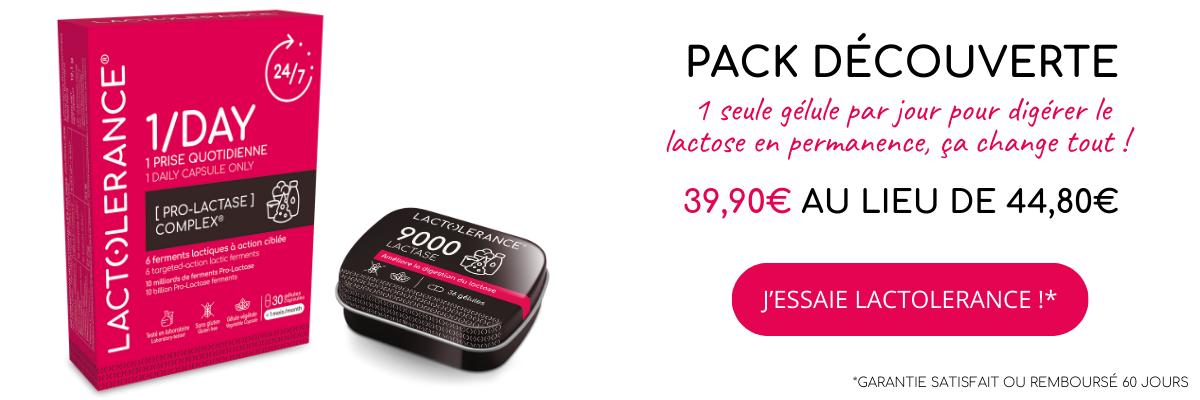
Here are 7 dietary strategies to keep in mind when suffering from lactose intolerance:
- find lactose hidden
- distinguish lactose products from lactose-free products
- compensate avoidance of dairy products
- master dairy products containing only traces of lactose
- substitute with 'fake' (vegetable) milk products
- secure its diet with low-fat dairy products
- supplement Lactolerance, lactase or lactic ferments products
1. Finding the hidden lactose
Lactose is often used by industry as a food additive:
- as texturizerfor the smoothness of the products, and
- as curatoreasy to find and inexpensive,
- as auxiliary active in the browning enzymatic (or maillardisation) of pastries for example (in the form of whey, rich in lactose).
As a result, they are found in prepared products where you would not expect to find them, including :
All meat preparations are likely to contain it: sausages, chorizo, mortadella, salami, pâtés, pies, mousses, terrines, rillettes, agglomerated hams - but also in apparently unprepared entry-level products, such as: ham (both raw and cooked), bacon, lardons, foie-gras, croissants, pains au chocolat, pains au lait, brioches, Zwieback-type rusks, pancakes, waffles. Caramels, nougat...Where one would not think of it a priori: quenelles, fish mousse, surimi (crab sticks), soups and soup powders, fried potatoes and chips, breaded meat or fish...Certain margarines, powdered condiments, bouillon cubes, sauces, mayonnaises, calcium-enriched products (soya milk, etc.), sports drinks.TP2T capsules, tablets and other (homeopathic) capsules and granules contain lactose as excipientlactose, not always mentioned on the packaging, including the contraceptive pill (100% of contraceptive pills sold in France). Lactose is used as humectantThis is a good way to retain water in products such as moisturising lotions.
2. Distinguish between lactose products and lactose-free products
Here we will talk about the chocolate and " ice cream "These vague names are often misleading, and you have to try to be precise if you want to know the lactose content!
Lactose in chocolate?
Not to mention the very explicit milk chocolatewhich contains milk powder or condensed milk, it should be made clear that the " white chocolate "As the name suggests, it is not made of cocoa: it is a preparation based on cocoa butter, with added sugar, flavouring - and milk! So be careful...
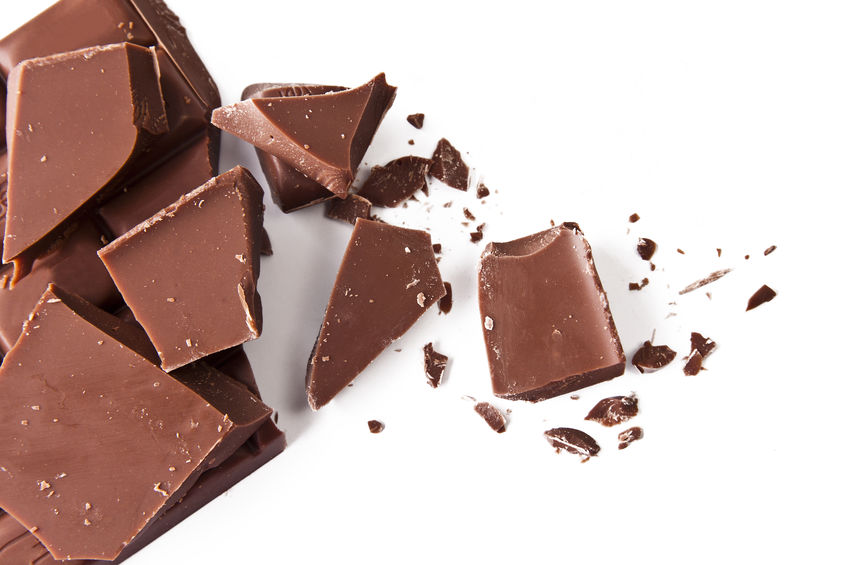
The couverture chocolate or pastry chocolate is used by professional chocolatiers and pastry chefs as a raw material for coatings (for fancy chocolates or truffles), but also for all types of "chocolate" pastries (fondant, cake, ganache, mousse or other cookies). It should be noted that although it contains at least 32% of cocoa butter (which makes it very fluid for making a thinner coating than a traditional one), it can be dark, milk or white - and that it is therefore necessary to refer to the characteristics of these different "chocolates".
As for the dark chocolatealso known as melting chocolate or bitter chocolateThis is the "chocolate" itself. It is a mixture of cocoa and sugar that contains a minimum of 35 % of cocoa, below which it must be called "chocolate confectionery". It rarely contains lactose, or only in trace amounts.
Ice cream
Here too, a careful distinction must be made between different categories of ice cream, depending on the presence or absence of dairy products.
On the one hand, those who are lactose-free (always check the composition to avoid unpleasant surprises):
Mixtures of water, sugar, fruit (or vegetables), may contain very low levels (less than 1%) of milk protein, but no lactose.Composed of water, fruit juice, sugars (and colourings), which (with some exceptions, to be checked) do not contain lactose either.On the one hand, the so-called lactose-free products that have been on the market for a few years as an alternative to ice cream and milk ice cream .... and on the other hand, those that contain dairy products As the name suggests, ice cream is made by freezing a pasteurised mixture of cream, milk, egg yolk, and sugar, flavoured with fruit, and therefore contain lactose. They must contain at least 7 % of egg yolk, always contain milk, and often cream, and must contain exclusively dairy fats and at least 6 % of non-fat dry milk extract (NFDE), composed of the non-fatty materials that make up milk (proteins, minerals, lactose). These ingredients have a double power: emulsifying (binding water and fat) and expanding (incorporating air into the mixture), and a double objective: to obtain a product that is more resistant to deformation (because it is more compact and melts) and superior organoleptic qualities (stimulating taste in particular).
Let's end our overview with a special mention for the ice cream conewhich contains lactose in most cases (milk-based waffle dough), so it is better to use jars instead!
3. Compensating for the avoidance of dairy products
If you have chosen the ascetic solution of avoiding dairy products, aiming at a total suppression of lactose in the diet, you should compensate the objective intake of these products, mainly in calcium, vitamins (A, B2 and D) and phosphorus.
Calcium-rich foods :
Some fruits (rhubarb, oranges, almonds) and vegetables (broccoli, beans and other legumes) are rich in calcium; spinach, of course, but also turnip greens, bok choy or Chinese cabbage, okra (or lalo, calalou or calalou), kale (or feather cabbage, collard greens, kale, or laciniate cabbage).Also known as "sea vegetables", which are popular with the Japanese in particular, and which are divided into colour groups: green seaweed (sea lettuce, ao nori, ulva), red seaweed (nori), brown seaweed (wakame, kombu) and blue seaweed (spirulina), oysters, shrimp, canned sardines with bones.Some fruits (rhubarb, oranges, almonds) and vegetables (broccoli, beans and other legumes) are particularly rich in calcium.Vitamin-rich foods : Liver in all its forms (cod liver oil, poultry liver, calf, heifer or lamb liver), green (romaine lettuce, spinach, lettuce) and orange (sweet potato, carrot, pumpkin, Lamb or heifer liver and beef kidneys, hard-boiled egg, whiting and mackerel, squid, brewer's yeast, roasted almond and green chicory. Cod liver (oil or tinned), herring (smoked or grilled), mackerel (fried), sardines (grilled), salmon (cooked), tuna (tinned or natural), hake. Foods rich in phosphorus :-
brewer's yeast, wheat germ, sesame seeds,
- liver and offal,
- nuts (walnut, almond, hazelnut, pistachio, cashew)
4. Controlling dairy products containing only traces of lactose: yoghurts and cheese
During the manufacture of certain dairy products, such as yoghurt and cheese, fermentation by various lactic enzymes allows the lactose to be almost completely eliminatedThis is the case for both of these products. Let's look at the case of these two products.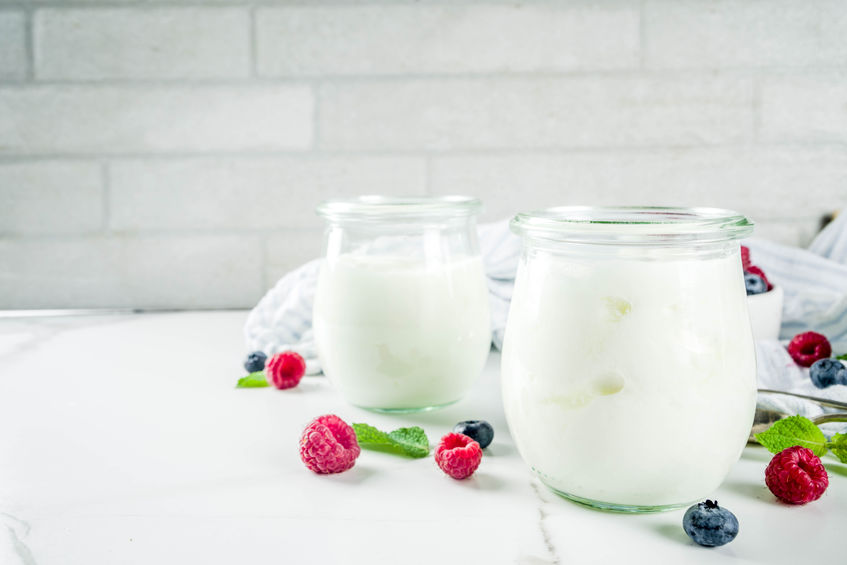
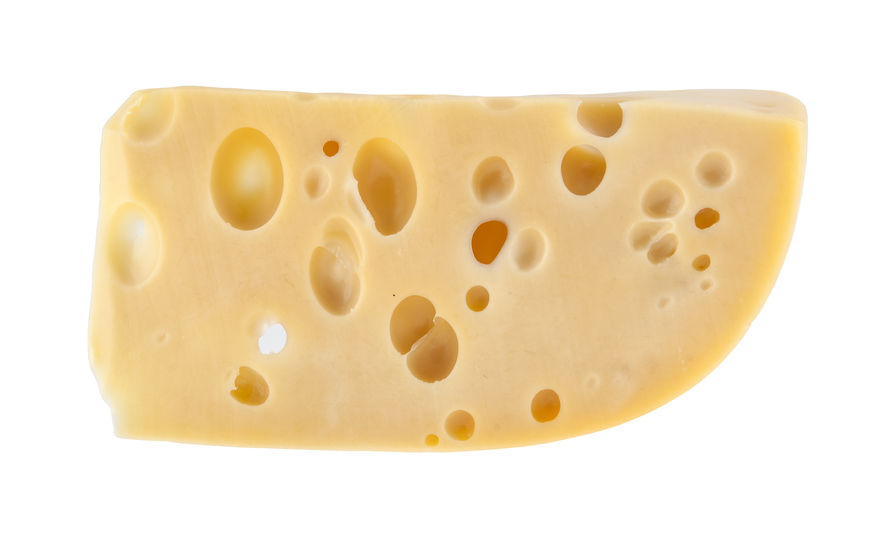
ripened cheeses contain almost no lactose, unlike fresh cheeses.
It should be noted here that for fresh cheeses, the adventure ends here They therefore contain much more residual lactose than other cheeses, which continue to lose their lactose during the subsequent stages of draining, moulding and salting, during which the cheese continues to lose its water - and thus its lactose - and finally during the ripening process (from a few weeks to 2 years), during which the paste hardens further, the taste becomes stronger - and the lactose almost disappears... This is why the more mature a cheese is, the less lactose it contains! If you are lactose intolerant, avoid fresh cheese, and if your intolerance is severe, opt for dry cheese - but be careful with the calories (fat concentrated in the "dry matter")! For more details, see our article on cheese.
5. Substituting "fake" (plant) milk products for milk
Dairy substitutes have been around for a long time, and are often available in organic and vegan shops. There are two main groups: cheese and milk and vegetable products.
- The fashion is for "fauxmages" or "vromages", plant-based cheeses of which more and more recipes can be found on the internet: Using oilseed puree (cashew nuts), berries, seeds and seaweed, spices, soya milk or almonds, aromatic herbs and natural plant flavours, they compete in ingenuity to make fake mozzarellas, fake Camembert or Parmesan, even adopting methods of fermentation (where the sugars from the oilseeds produce lactic acid) and maturing, just like for real cheese!
- The plant milks have made a real place for themselves alongside the various types of milk on the shelves: in addition to the classic soya milk, almond milk and rice milk, there is also oat milk, spelt milk and hemp milk.
This is the perfect way to prepare rich and delicious lactose-free meals and to add a touch of class to your meals. lactose-free recipes !
6. Securing your food with lactose-free products
What is 'de-lactosed' milk? Let's start by correcting a ludicrous but spontaneous idea when reading the term "lactose-free": no, lactose-free milk is not milk from which the lactose has been extracted! A quick reminder: lactose is the sugar (carbohydrate) in milk, together with other constituents: mainly proteins (casein) and fatwhich gives the cream of the milk (lipids). This composition can be found regardless of the type of milk (cow's milk, sheep's milk, goat's milk, infant milk or even breast milk) and its presentation (whole, pasteurised, semi-skimmed or skimmed milk, powdered milk or condensed milk). 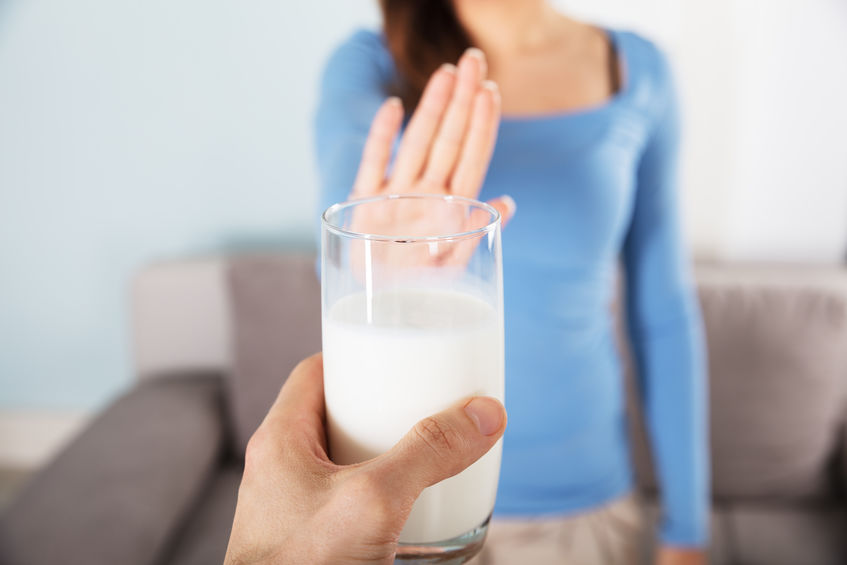
Gold lactose is a complex sugar (disaccharide), which is only digestible if it is broken down into simple sugars (glucose + galactose) - and this transformation (by hydrolysis) is performed by the digestive enzyme lactase (produced in the small intestine of lactose-tolerant people), which makes the lactose available to the digestive tract. Hence the answer to our original question: delactosed' milk is therefore milk to which the enzyme lactase has been addedThis is an all-in-one milk (lactose + lactase) designed for lactose intolerant people who no longer produce enough lactase enzyme to digest milk with its lactose. Once this stage of digestion has been completed, all that remains is for you to calmly assimilate the other components of "delactosed" dairy products, proteins, vitamins and other minerals - while keeping an eye on lipids!
7. Supplementing: Lactolerance, lactase or lactic ferments products
The range of food supplements Lactolerance allows us to respond "à la carte" to all types of strategies for dealing with lactose intolerance:
- capsules of Lactolérance 4500 and Lactolérance 9000These two products are intended for people with moderate (4500) or severe (9000) lactose intolerance, who have chosen to avoid lactose at home but wish to avoid lactose in their diet. These two products are intended for people suffering from moderate (4500) or severe (9000) lactose intolerance, who have chosen to avoid lactose at home, for example, but wish to take precautions when eating out (mid-morning or mid-afternoon snacks, work canteens, restaurants, receptions, dinners at friends' houses) and thus avoid depriving themselves of dishes that may contain lactose, even in small quantities.
1 to 2 capsules are sufficient, depending on the severity of your intolerance and the lactose concentration of the products you are going to consume. They are effective for 45 minutes to 1 hour. The lactase they contain will make up for your lactase enzyme deficiency and dissociate the lactose, making it perfectly digestible.
- Lactolérance 1DayLactose intolerance is a permanent and innovative solution to the daily fight against the symptoms of lactose intolerance: one capsule a day is enough to eliminate the discomfort of lactose intolerance all day long.
The 1 capsule a day formula is therefore effective over the long term, for people who often eat out, don't want to scrutinise the lactose content of all the foods they choose - and decide to forget about the symptoms of their digestive problems simply by swallowing one capsule a day! Lactolerance 1Day is designed for all degrees of intolerance; it starts to be really effective after one week and reaches its maximum effectiveness after 6 weeks of daily use.

Hello, I'm Vincent
Like you, I'm lactose intolerantI know exactly what you're going through and the difficulties you encounter on a daily basis. For over 10 years, I've been helping our customers to use our dietary supplements and giving advice and tips on how to improve their digestive comfort. I'm also a keen cook and gourmet, so you'll find my favourite recipes for a lactose-free diet in this blog.
Lactose intolerance is not inevitable! With LACTOLERANCE you can digest with complete peace of mind
